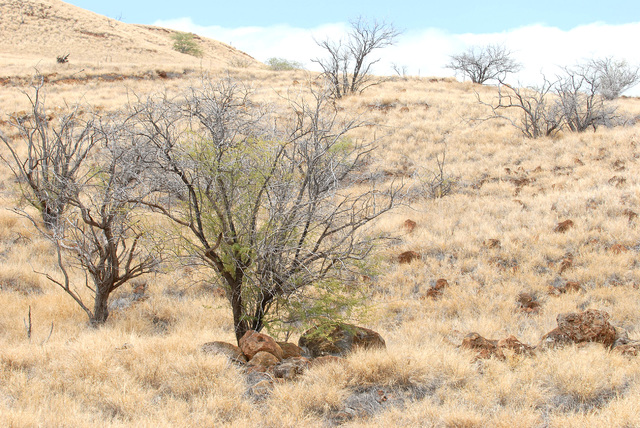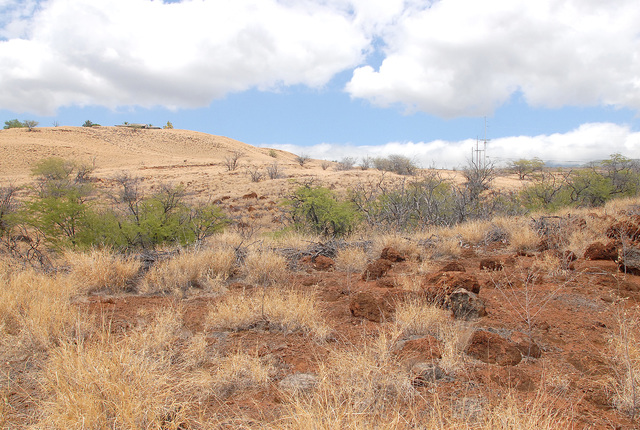Severe drought has returned to the Hawaiian Islands, however, the Big Island has been spared, for now.
Severe drought has returned to the Hawaiian Islands, however, the Big Island has been spared, for now.
Persistent below-average rainfall conditions have resulted in the return of severe drought to leeward areas on Maui and Kauai, Kevin Kodama, a hydrologist with the National Weather Service based in Honolulu, told West Hawaii Today on Thursday, adding that such a designation hadn’t been issued for Hawaii since May 2014. Referred to as D2 on the U.S. Drought Monitor Map, severe drought means crop or pasture losses are likely and water shortages common in the affected area.
The Big Island was spared from the D2 designation on Thursday thanks in part to a pretty good wet season, which wrapped up in April, and before that the wettest dry season recorded in three decades, Kodama said, noting ranches in mauka South Kohala and North Kohala reported receiving “pretty good” rainfall during the recent wet season.
But, the island, which last saw severe drought in interior areas in February 2014, is definitely not out of the woods.
“Things are starting to dry out — not so much on the Big Island, yet, but that will come around with El Nino and this being the dry season on the leeward side,” Kodama said.
In a recent trip to the island, Kodama said he traversed the northern half of the Big Island, from Hilo to about Kawaihae Road, and found things to be normal with “nice” conditions from Hilo to the wet (east) side of Waimea. Once reaching the dry side of Waimea, nearing Kawaihae Road, he found the typical dry conditions.
“I’ve seen it worse,” he said. “But I would imagine as time goes on and we just stay in the warmth and persistent trades that things will get even worse.”
Currently, nearly all of the leeward side of the Big Island, stretching from about Pahala in Ka‘u to about Mahukona Beach Park in North Kohala, is listed by the National Drought Monitor as being abnormally dry. A band of moderate drought stretches across interior areas from about Ocean View in Ka‘u to about Old Coast Guard Road in North Kohala.
The windward side of the Big Island was not suffering drought as of Thursday, Kodama said.
However, Kodama expects the severe drought designation to reach the Big Island within the next few months. He added that June is often the driest month of the year and not much rainfall is expected for leeward areas in the near future.
“Portions of leeward South Kohala and the upper slopes of North Kona — the higher elevations above the coffee belt — and into the interior Pohakuloa Training Area will be seeing severe drought develop in the next months,” he said. “I would also anticipate that will include some areas in Ka‘u, like the South Point area and the lower sections, up toward Pahala.”
And heading into the wet season, which runs October through April, things are not looking much better, Kodama said.
“For the leeward side, barring a tropical cyclone impact, which you can’t predict, the leeward sides are going to get drier and drier, and then the wet season will come around and we’re not expecting it to get better,” he said. “Once December rolls around, things will start drying out. Statewide, we will probably see quite a bit of dryness.”





